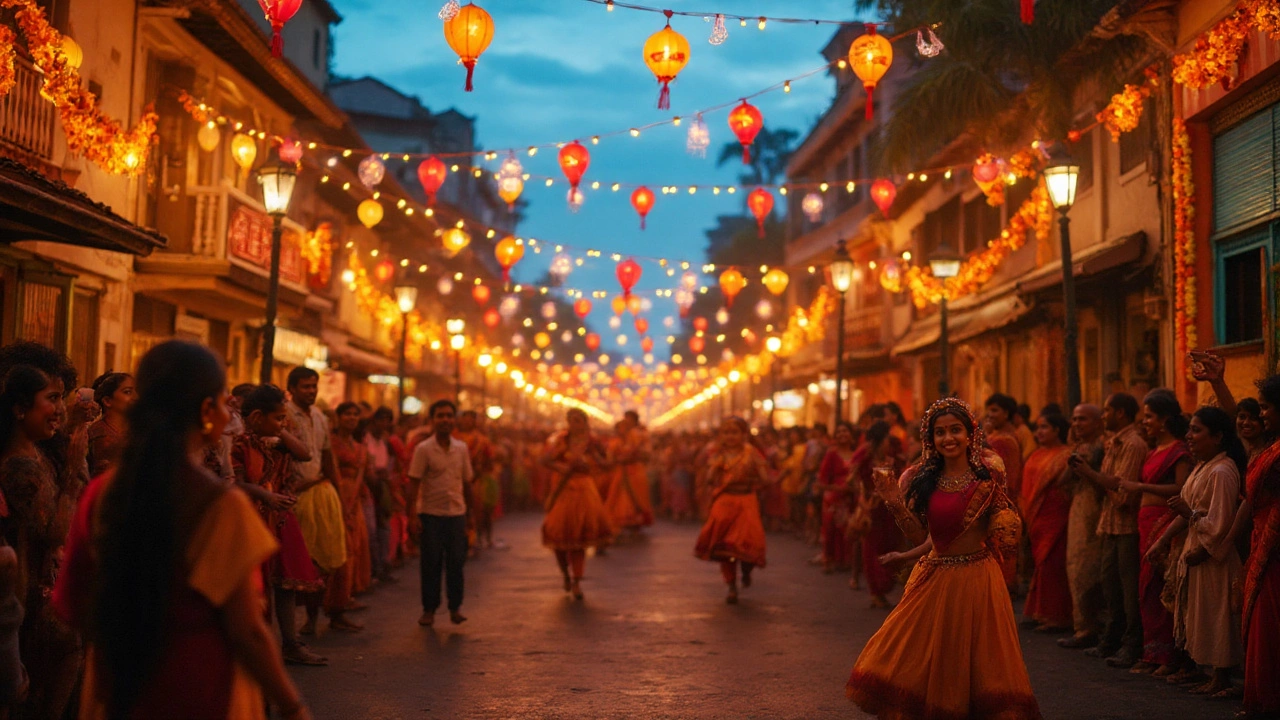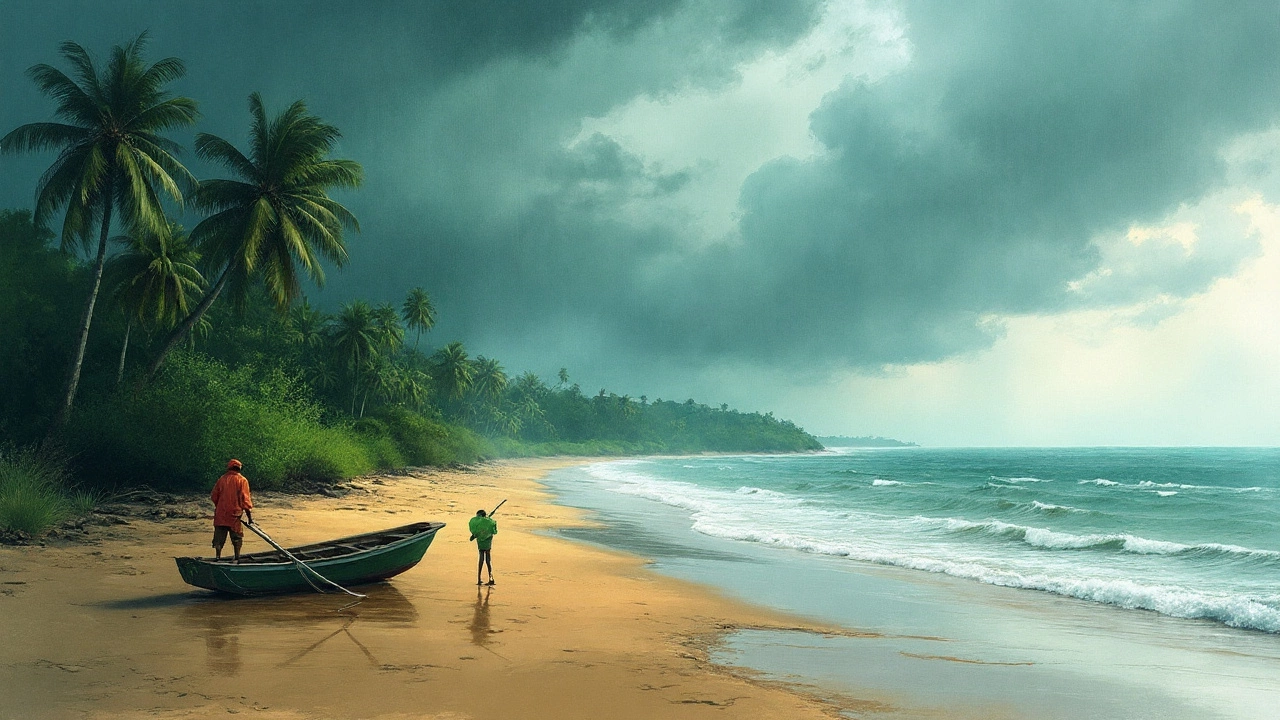Best Time to Visit Goa: When to Travel for Perfect Weather, Festivals, and Fun
 Aug, 5 2025
Aug, 5 2025
Your mate asks if you’ve ever felt the sand between your toes at Palolem Beach when the sun’s slipping down, painting the water gold. Or danced all night at Sunburn Festival and woken up on a hammock before breakfast. Maybe you googled "Goa" and got hit with a bunch of conflicting advice about crowds, rain, and what months are best. Here’s the real story: Goa changes its vibe completely depending on when you visit. So picking the right time isn’t just about the weather—it can make or break your whole trip. Let’s get stuck into the nitty-gritty of what each season brings and which months are worth booking that ticket for, especially if you want the full magic, not just a patchy postcard memory.
Understanding Goa’s Seasons: Weather, Festivals, and Crowds
The weather in Goa seriously drives the entire show. We’re not talking just a few rainy days here and there—this tiny state swings from brilliant sunshine to thunderous monsoon with personality to spare. If you can handle a bit of science, here’s the breakdown. From November to February, Goa is in its so-called "peak season." Daytime temperatures hover around 28°C (82°F), nights cool off, and the humidity drops. It’s dry, breezy, and every shack on the beach throws open its doors. Make no mistake, this is also when the crowds pour in, especially during Christmas and New Year. Hotels and flights surge, and it can feel almost carnival-like as music festivals like Sunburn and Supersonic roar into town. But if you like the energy of a packed, buzzing place, that’s a win. And you rarely get a drop of rain—Goa’s famous winter is made for beach bumming, safe swimming, and epic seafood nights under fairy lights.
Then there’s the pre-monsoon stretch—March to May. The Indian summer ramps things up with higher temps, often 33°C (91°F) or more, and the humidity climbs as well. The tourist scene fades. As a dad, I remember walking with my kids, Aria and Felix, on nearly empty sands in April and feeling like we had the whole coastline for ourselves. The flip side: the heat means you’ll only want to go outside at sunrise or sunset unless you score a place with a pool and icy drinks on tap. Prices drop, crowds thin out, but the midday sun can feel relentless if you’re not built for it.
Come June, the monsoon arrives like a switch has been flipped. The skies open up with relentless rain and lush green takes over—imagine waterfalls bursting out of nowhere and rice paddies glowing neon. The sea gets rough, lifeguards pull flags up on most beaches, and many shacks pack up for the season. But don’t rule it out—Goa is a different world in the rain. There’s a wild, untamed feeling that you just don’t get at any other time, and the temples and spice farms buzz with earthy scents. You’ll miss out on safe swimming and water sports, but if you’re after peace, low costs, and those "secret Goa" moments, monsoon is weirdly magical.
To make it all a bit clearer, here’s a quick cheat-sheet:
| Season | Months | Average Temp (°C) | Rainfall | Atmosphere |
|---|---|---|---|---|
| Peak | Nov-Feb | 28 | Dry | Busy, festive, lively |
| Pre-Monsoon | Mar-May | 33 | Low | Hot, quiet, fewer crowds |
| Monsoon | Jun-Sep | 29 | Very high | Green, peaceful, few tourists |
| Post-Monsoon | Oct | 31 | Moderate | Fresh, beaches reopening |
One thing nobody tells you: Goa’s vibe swings wildly from North to South. North Goa is party central, especially at peak time; South Goa is the retreat for folks wanting slow mornings and empty patches of sand. Wherever you land, the timing can completely reshape your experience. Even locals time their big celebrations with the seasons, from Carnival and Shigmo in February-March to Diwali fireworks in October-November.

Peak, Monsoon, and Shoulder: Which Season Fits Your Travel Style?
If you want postcard-perfect beaches, endless sunshine, and a social scene that barely slows down at night, nothing beats mid-December through February. Every beach shack is open, the flea markets bustle with color, and it’s prime season for water sports and boat trips to spot dolphins. Prices are the highest—sometimes two to three times what you’ll see in monsoon—but if you plan early, you can still snag a local guesthouse and eat fresh curries right on the sand. If you’re into weddings, honeymoons, or just want your Instagram to pop, this is pure "classic Goa." My family and I went last January—it was chaos in the best possible way, and the kids declared the tide pools at Agonda "better than any playground."
The shoulder months in October and March are secret weapons for anyone who likes a balance—good weather but without that peak season crush. October is brilliant: the green from the monsoon hasn’t vanished, you’ll find better rates, shacks start reopening, and local festivals kick in. True, the sea is a bit choppier, but crowds haven’t clogged up every road yet. March swings the other way: you still have great sun, with just a hint of the summer’s heat turning up. If you crave a bit of nightlife but want to avoid elbowing your way to the bar, late February and March are the sweet spot.
But maybe you live for a bargain or want a truly offbeat experience. Monsoon (June to September) will surprise you. Yes, the sea isn’t safe for swimming or water sports, and yes, most of the beach party scene packs up. But imagine the whole state transforming into something lush and cinematic: waterfalls at Dudhsagar crashing over rocks, jungle treks where butterflies practically lead the way, the markets bursting with fat mangoes and freshly fried samosas. You’ll get deals on hotels, even in top spots like Baga or Calangute, and there’s something deeply relaxing about hearing the rain at night. Aria once told me it reminded her of a "secret land"—we spent mornings sipping chai under a tin roof and the kids made friends with local goats, not other tourists.
Now, be clear—Goa’s infrastructure sometimes stumbles during heavy rain. Roads flood, train schedules can get shaky, and scooter trips can head south in a hurry. If you’re willing to trade lazy mornings by the beach for backwater boat rides and temple visits, you might fall for monsoon too. Plus, you’ll finally see why locals say "real Goa lives in the rain." That energy is hard to find elsewhere.

Festival Calendar, Insider Tips, and Booking Wisely
The easiest way to supercharge your trip is by lining up your visit with one of Goa’s wild festivals or unique events. Christmas and New Year see fireworks light up the sky and nearly every shack turns into a dance floor—the energy is off the charts, but so are the crowds. If you want to mix party with a hint of tradition, hit Carnival in February or March, a time when the streets in Panjim fill up with dancers, masks, and floats. Shigmo, Goa’s answer to Holi, drenches everyone in color, while the Sao Joao festival in June wraps Catholic villages in flower wreaths and wild, river-jumping parties. Music lovers land for Sunburn (December) or VH1 Supersonic (February-March), with DJs from around the world.
If you’re planning to go during Peak months (mid-December to late January), book three to six months ahead for flights and hotels—especially if you want to stay in the heart of places like Anjuna or Palolem. Accommodation vanishes fast, and even getting a taxi can feel like a lottery win. I’ve learned the hard way: pay a bit more for central guesthouses or resorts, especially with kids, because even a short ride back at midnight can be more hassle than it’s worth when the streets are jammed.
During monsoon, flexibility is key. Loads of smaller places close or refurbish, but big hotels and cozy homestays drop rates dramatically. Want a riverside villa or pool suite for a song? July and August are your months. South Goa’s Agonda or Patnem beaches get especially dreamy under the clouds, and if you’re up for trying real Goan food, the monsoon brings out rare dishes like "xonacho ross" (sour mango curry) you won’t find the rest of the year.
Here are some simple tips that work every time:
- Pack for the season: peak months need light cottons, but always keep a warm layer for night; monsoon means fast-drying clothes, jelly shoes, and a tough umbrella.
- Try South Goa for peaceful sands in busy season—Palolem and Galgibaga rarely feel packed, and the sunsets are legendary.
- Markets sway with the season—hit Anjuna Flea Market on a Wednesday in winter, or Mapusa Market on a Friday for local flavor all year.
- Advance anything: tours, dinner tables, and even beach beds vanish in December. In July, the same places beg you to come in and relax a while.
It’s wild how different Goa can feel just because you changed the month on your calendar. Heat, rain, music, peace, crowds—the best time really comes down to the trip you want. If you can swing it, go more than once and see two sides: sand in your shoes when the state is buzzing, and the green magic that locals live for every monsoon. Either way, it won’t be a boring trip, I promise. And if you get stuck with rain, just grab a motorbike, chase the clouds, and see where the road spits you out—you might just find your own piece of Goan legend.